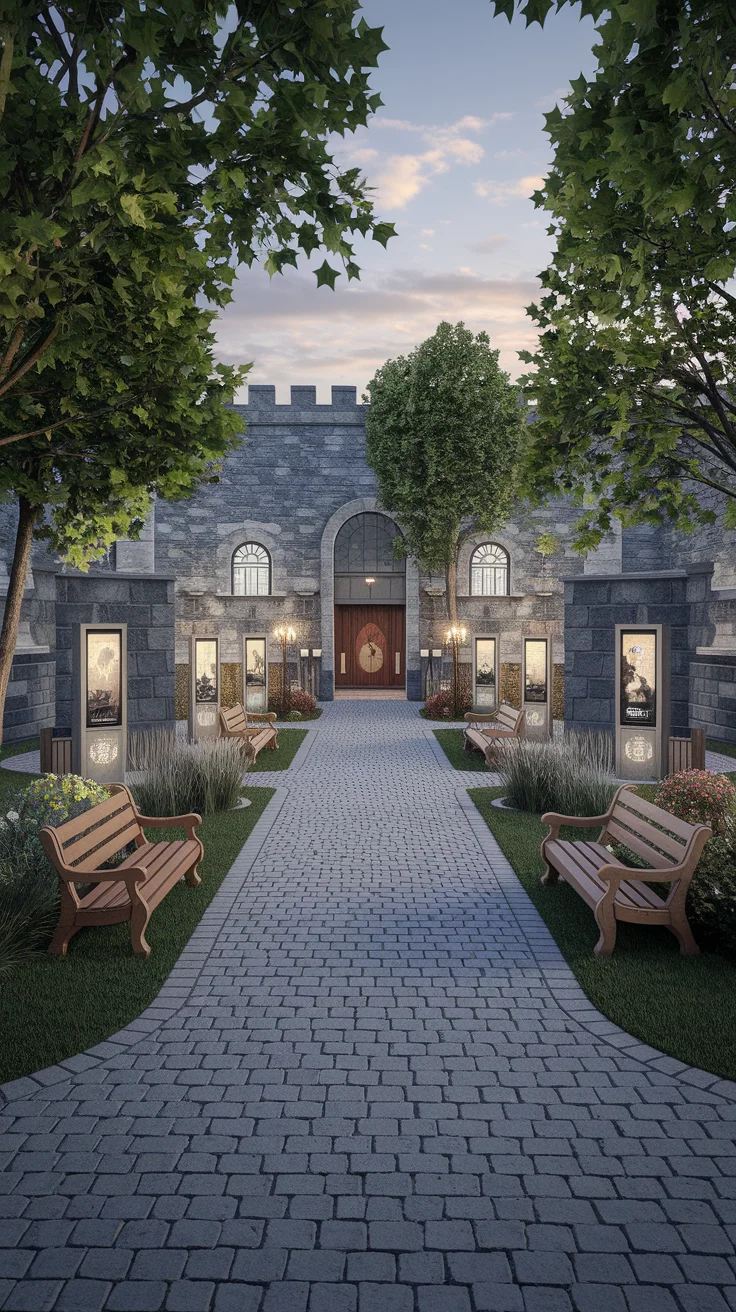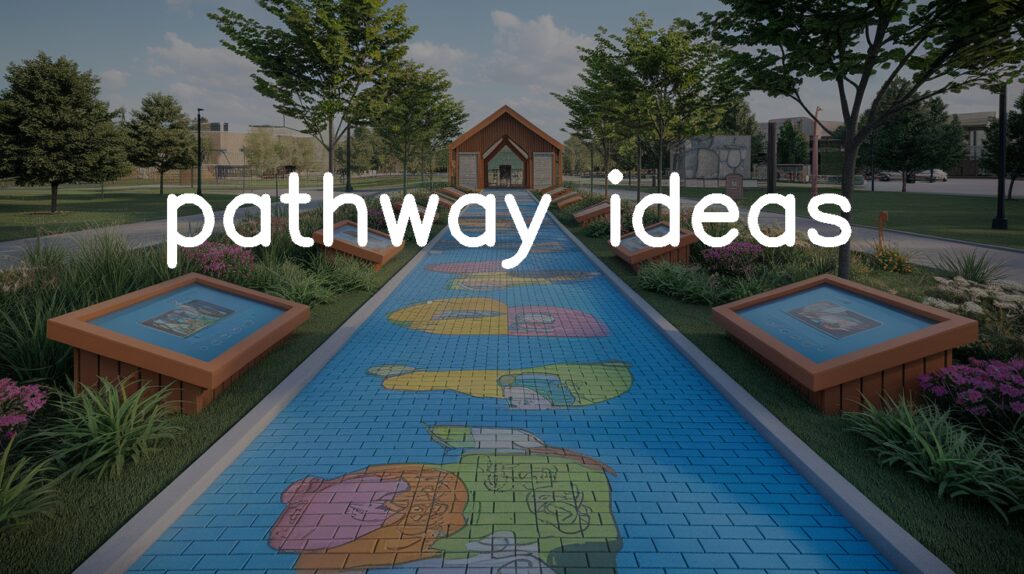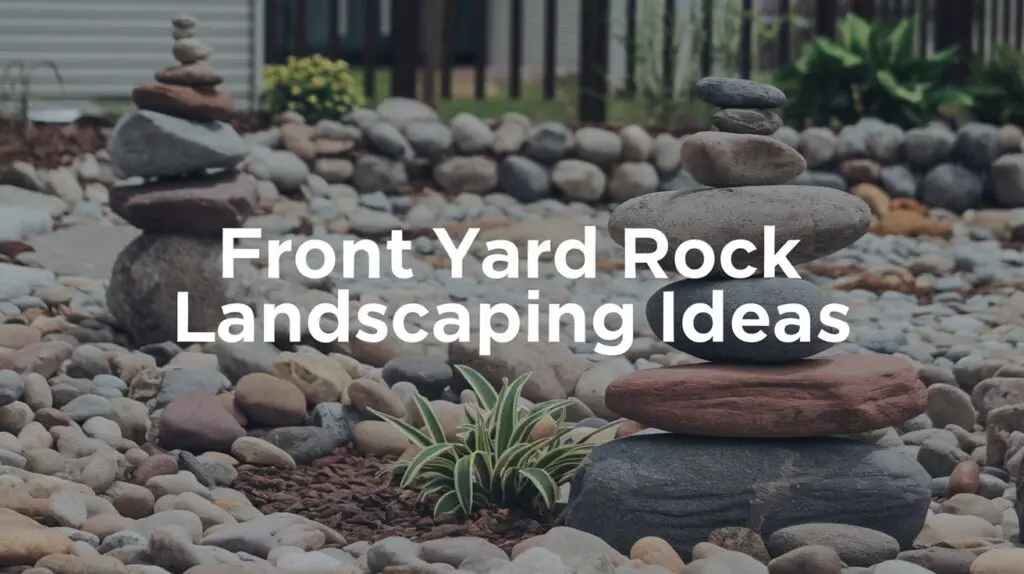Exploring the concept of pathways opens a fascinating dialogue about the routes and decisions that shape our personal and collective journeys. Whether metaphorical or literal, pathways represent the choices and directions that influence our lives, careers, and communities. In this exploration, we delve into innovative ideas and dynamic perspectives on pathways, highlighting their potential to lead us toward new opportunities, inspiring transformations, and unexpected destinations. By examining both established routes and novel trajectories, this article seeks to illuminate the diverse paths that can lead individuals and societies toward growth and fulfillment.
Urban Nature Trail
Incorporate an Urban Nature Trail that weaves through the bustling cityscape, offering a blend of greenery and modern design. This pathway can feature a combination of permeable pavers and recycled composites, providing a sustainable and eco-friendly surface. Planters overflowing with native plants and vertical gardens attached to nearby structures can add vibrant greenery. Lighting can be embedded along the sides of the pathway, with solar-powered LED lights ensuring it’s both energy-efficient and safe at night. Benches made from reclaimed wood provide resting spots, inviting city dwellers to pause and enjoy nature amidst urban surroundings. A calming palette of earthy tones, like olive green, sandy beige, and deep charcoal, can seamlessly blend the trail with its metropolitan environment.
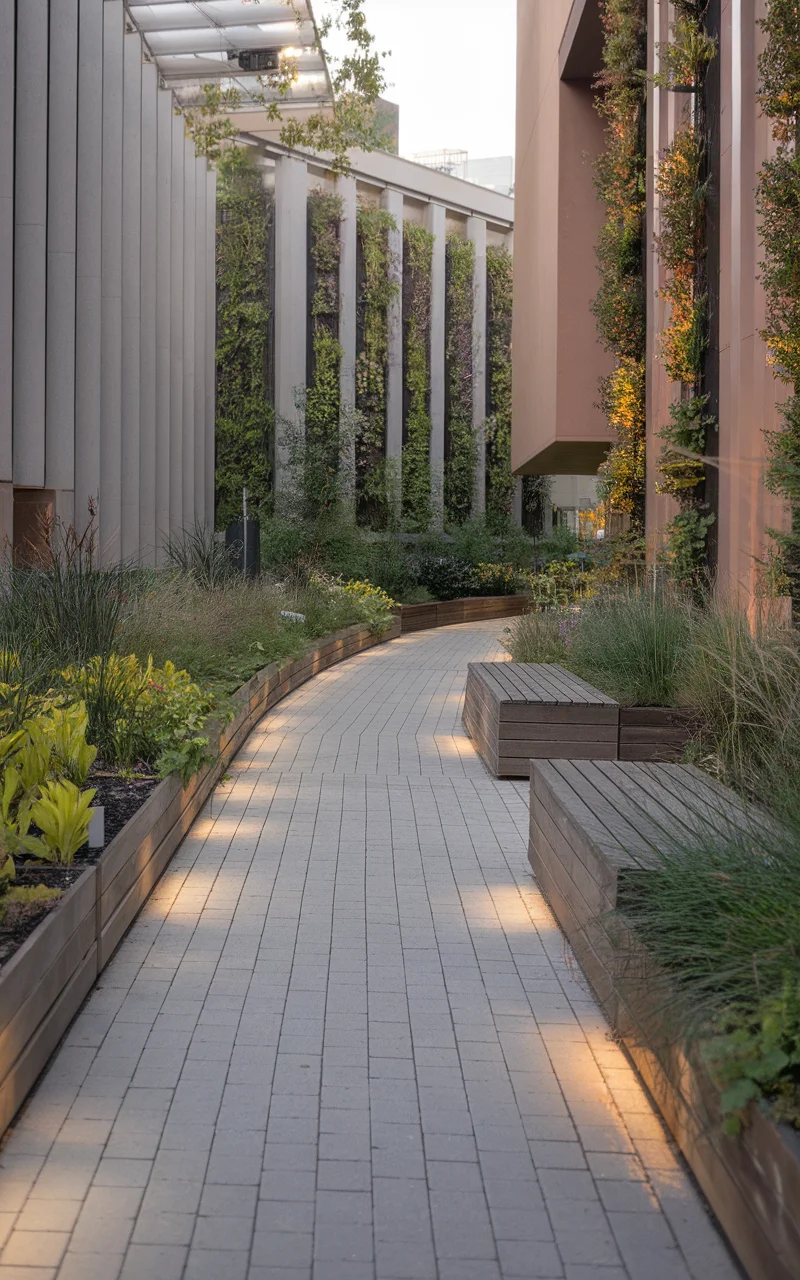
Zen Garden Pathway
Create a Zen Garden Pathway in your backyard, offering a peaceful and meditative space. This path can be constructed using stepping stones made from smooth river rocks or ceramic tiles, spaced evenly to encourage a mindful stroll. Surround the stepping stones with a gravel bed, using light-colored gravel to enhance the sense of tranquility. Interspersed along the path, incorporate carefully chosen boulders and rock arrangements typical of a traditional Zen garden. Plant minimalistic greenery like dwarf pines or bamboo clumps, which lend to a serene appearance. Features such as a small water basin or bamboo fountain can introduce soothing sounds to the space. The color scheme can focus on natural tones like soft grays, moss greens, and subtle earth browns, which harmonize with nature’s palette to enhance a sense of calm and reflection.
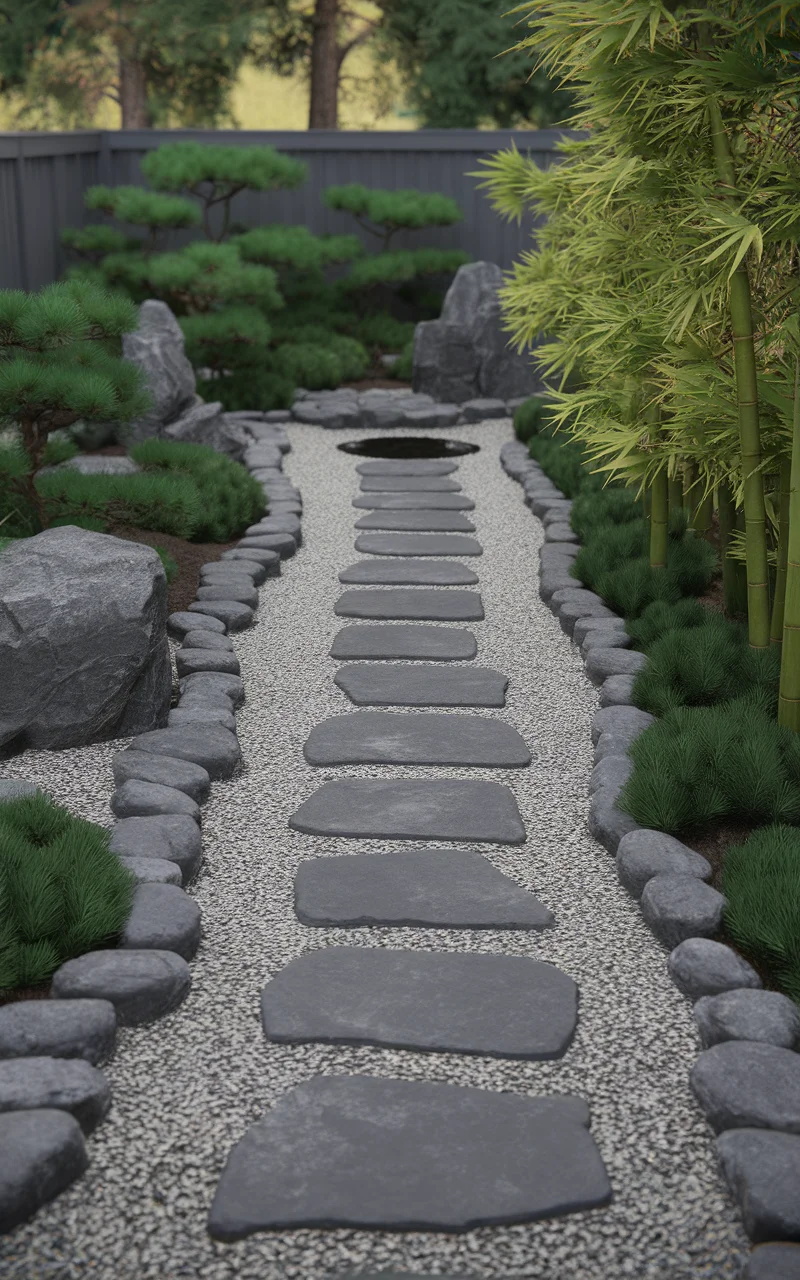
Community Mural Walkway
Develop a Community Mural Walkway that transforms a neighborhood path into an open-air gallery celebrating local art and culture. This pathway can be paved with colorful, durable concrete tiles, each featuring segments of community-inspired murals created by local artists, schools, or community groups. To foster community engagement, host workshops and events encouraging residents to contribute to new art installations over time. Include plaques that tell the stories behind each mural, fostering a sense of community pride and connection to the local history and culture. Install eco-friendly benches and planters along the walkway to offer rest areas and social spots. The color scheme can feature vibrant hues like bright blues, sunny yellows, and lively reds, enhancing the walkway’s charm and inviting everyone to explore and appreciate the community’s creative expression.
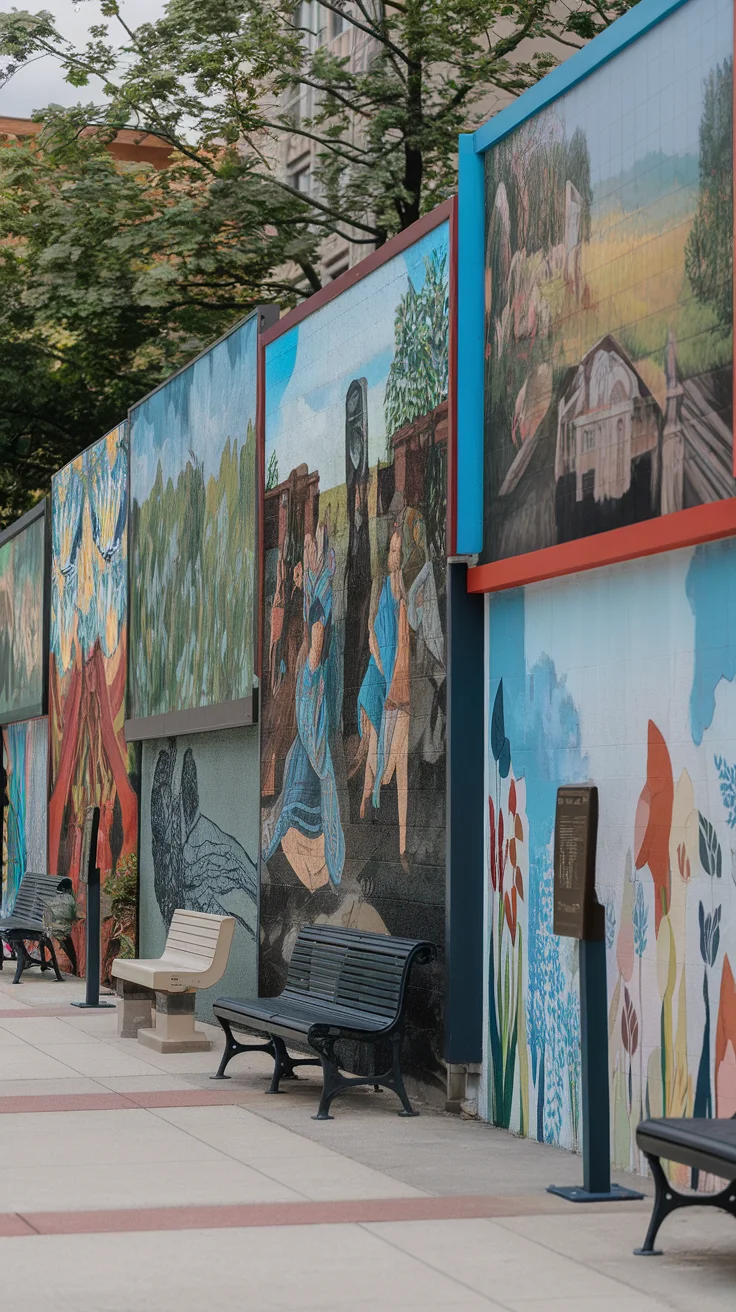
Artisanal Cobblestone Pathway
Introduce an Artisanal Cobblestone Pathway that can transform a small backyard or patio into an inviting, old-world escape. Use a combination of reclaimed cobblestones or bricks in various shades and textures, arranged in a charming, hand-crafted pattern. The irregularities in the stones can create a rustic and timeless look. To ensure comfort underfoot, gently round off cobblestone edges. Flank the pathway with low-growing herbs like thyme or creeping rosemary, which can release delightful fragrances when brushed against. Introduce subtle, ground-level lighting using hidden LED fixtures to maintain the pathway’s intimate appeal at night. A color scheme of subdued grays, muted reds, and soft terracotta can enhance the rustic feel, while maintaining a cohesive and warm atmosphere.
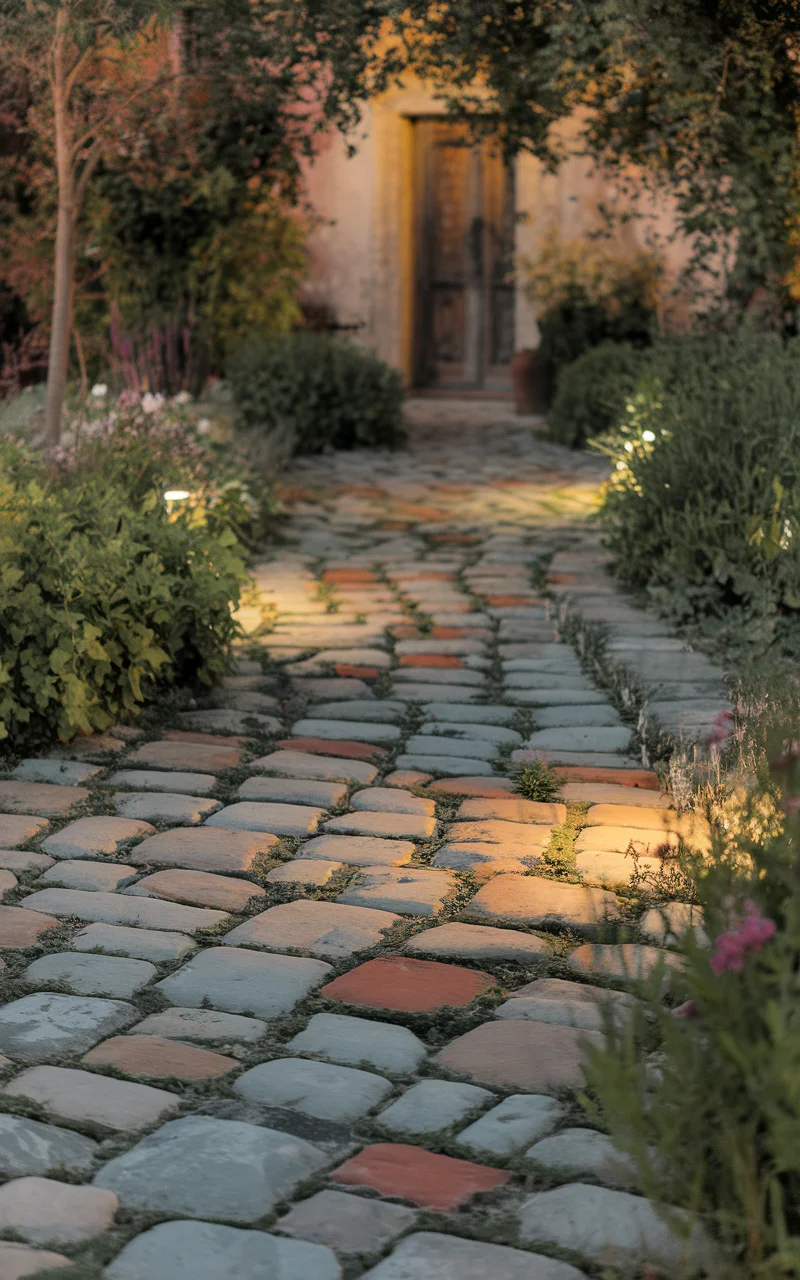
Interactive Learning Pathway
Create an Interactive Learning Pathway designed to engage the community, particularly families and children, by integrating educational elements along a scenic outdoor trail. Construct the path using sustainable materials like recycled rubber or compacted gravel to minimize environmental impact. Along the pathway, install interactive stations that present educational content related to local ecology, history, or science topics. These stations can employ QR codes, AR (Augmented Reality) experiences, or simple info boards for low-tech engagement. Encourage hands-on learning by incorporating touchable rock formations, tree identification plaques, or sound stations that mimic local wildlife. A bright and inviting color palette including sunflower yellows, sky blues, and leafy greens can make the pathway eye-catching and welcoming, ensuring it’s both an educational tool and a delightful outdoor experience for all ages.
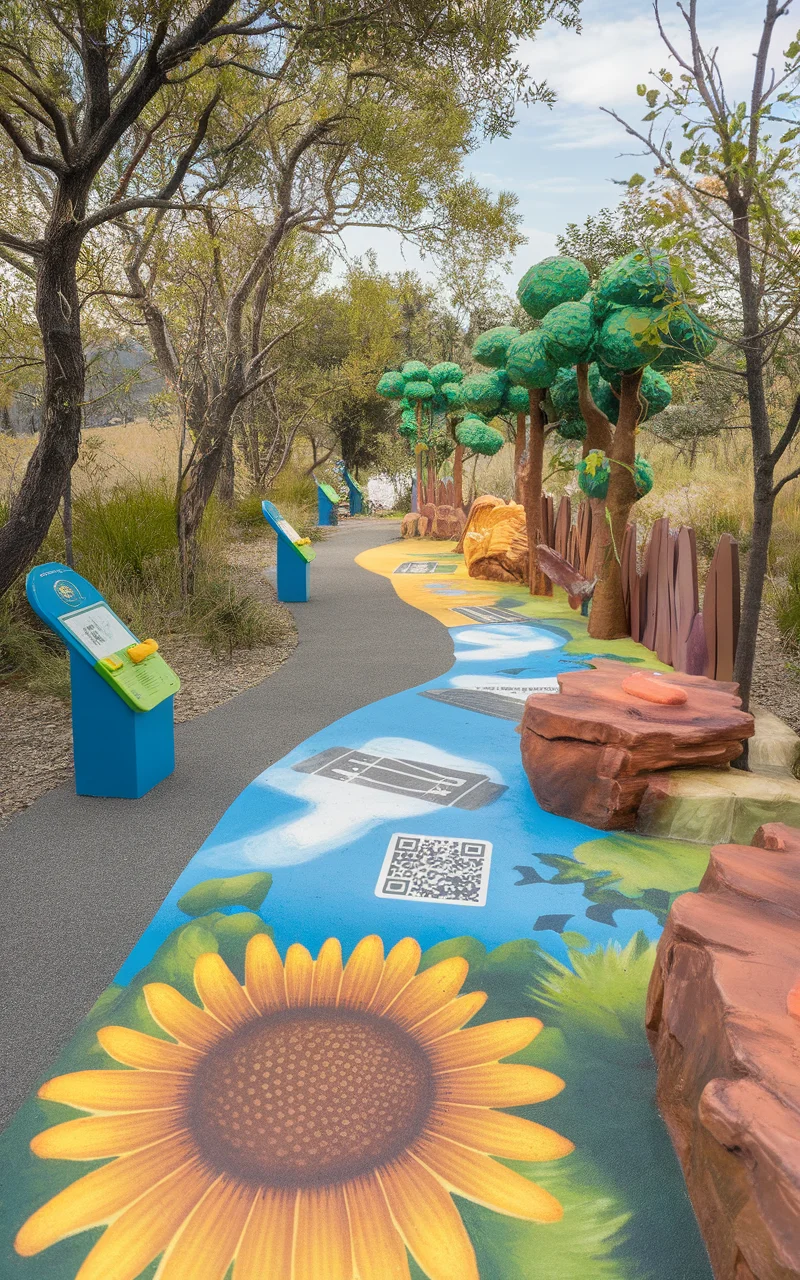
Sensory Experience Pathway
Design a Sensory Experience Pathway in a public park or garden, offering visitors an immersive journey through different sensory environments. The path can be laid with smooth, tactile surfaces like weather-resistant cork or lush moss, providing intriguing textures underfoot. Zone the pathway into distinct sections, each focused on one of the five senses—for instance, a sound garden with wind chimes and gentle music, a fragrance corridor lined with aromatic herbs and flowers, and a visual area with mesmerizing light installations or vibrant plantings. Integrate interactive elements such as touch-responsive art installations or taste stations featuring local edible plants and fruits. Use calming colors like seafoam green, soft lavender, and tranquil teal to create a soothing atmosphere that invites exploration and relaxation, making it a captivating journey for visitors of all ages and abilities.
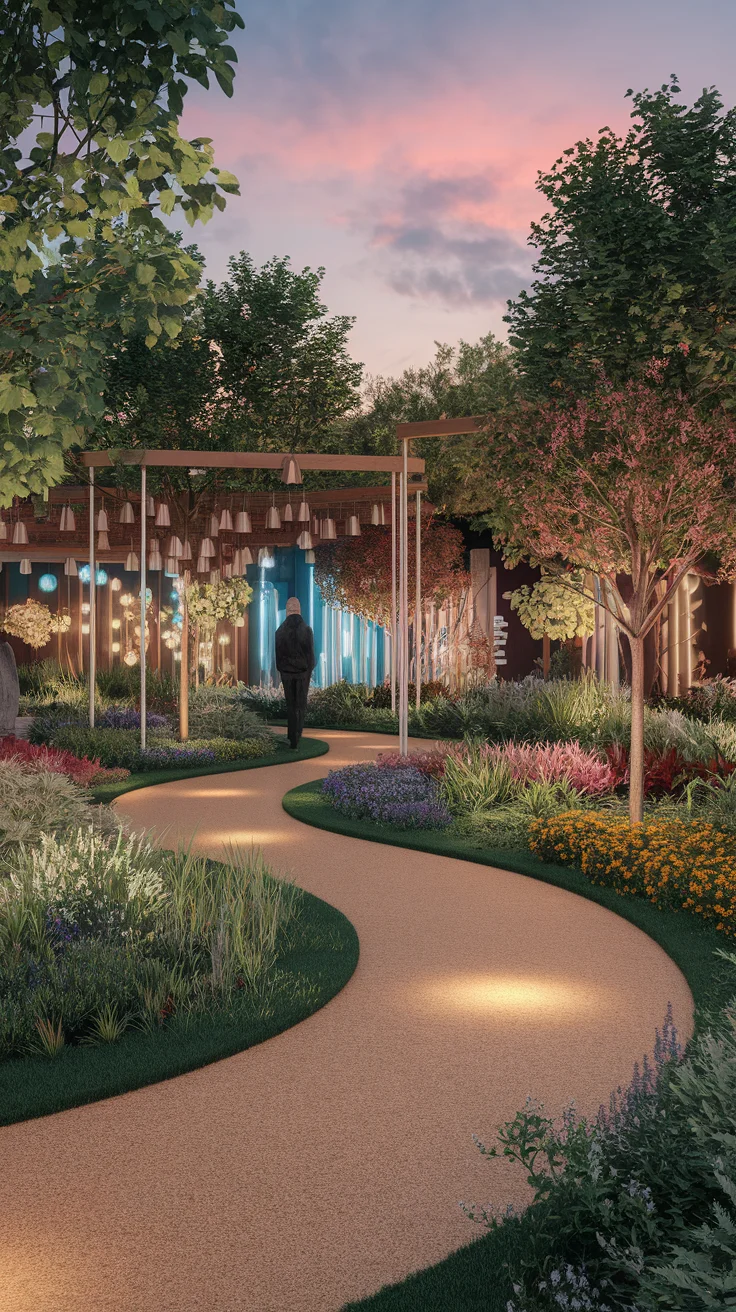
Quiet Reflection Walkway
Establish a Quiet Reflection Walkway designed for peaceful contemplation and personal reflection in any green space or garden. Lay the path with large, flat stone slabs or natural flagstones that provide a stable and understated surface, allowing the surrounding nature to be the focal point. Integrate gentle curves into the design, encouraging a leisurely and thoughtful pace. Flank the pathway with soft grasses like ornamental oat grass or blue fescue to create a whispering effect with every breeze. Introduce small seating areas with unobtrusive, minimalist benches crafted from driftwood or natural stone. Consider installing translucent panels as subtle dividers along sections of the walkway to instill a sense of privacy. Choose muted, calming colors like deep forest green, soft taupe, and misty gray to harmonize with the environment, enhancing the idyllic ambiance. This pathway becomes a sanctuary for quiet moments, contemplation, and connection with nature.
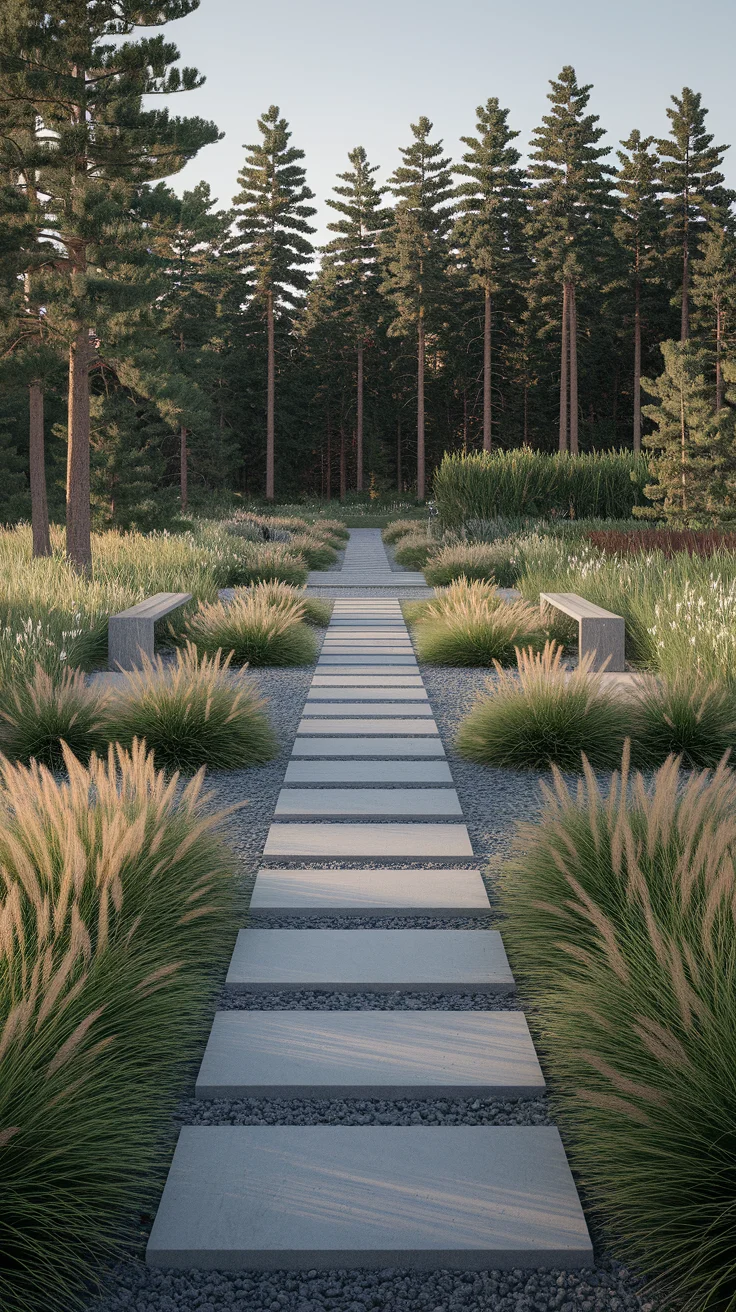
Interactive Storybook Pathway
Introduce an Interactive Storybook Pathway designed to transform an ordinary trail into a narrative adventure for children and families. Pave the path with weather-resistant, illustrated tiles that feature sequential scenes from a popular storybook or an original tale crafted by community authors. Along the way, install interactive panels where visitors can listen to audio narrations, watch short animations, or solve story-related puzzles. Encourage creativity by incorporating chalk-friendly sections where children can draw their interpretations of the story. Foster community engagement by hosting storytelling events where local authors or performers bring the pathway’s stories to life. Use a vibrant color palette with playful pastels such as sky blue, sunny yellow, and soft pink to create an enchanting atmosphere. This pathway concept blends literature with outdoor activity, promoting reading and imagination in an engaging and lively manner.
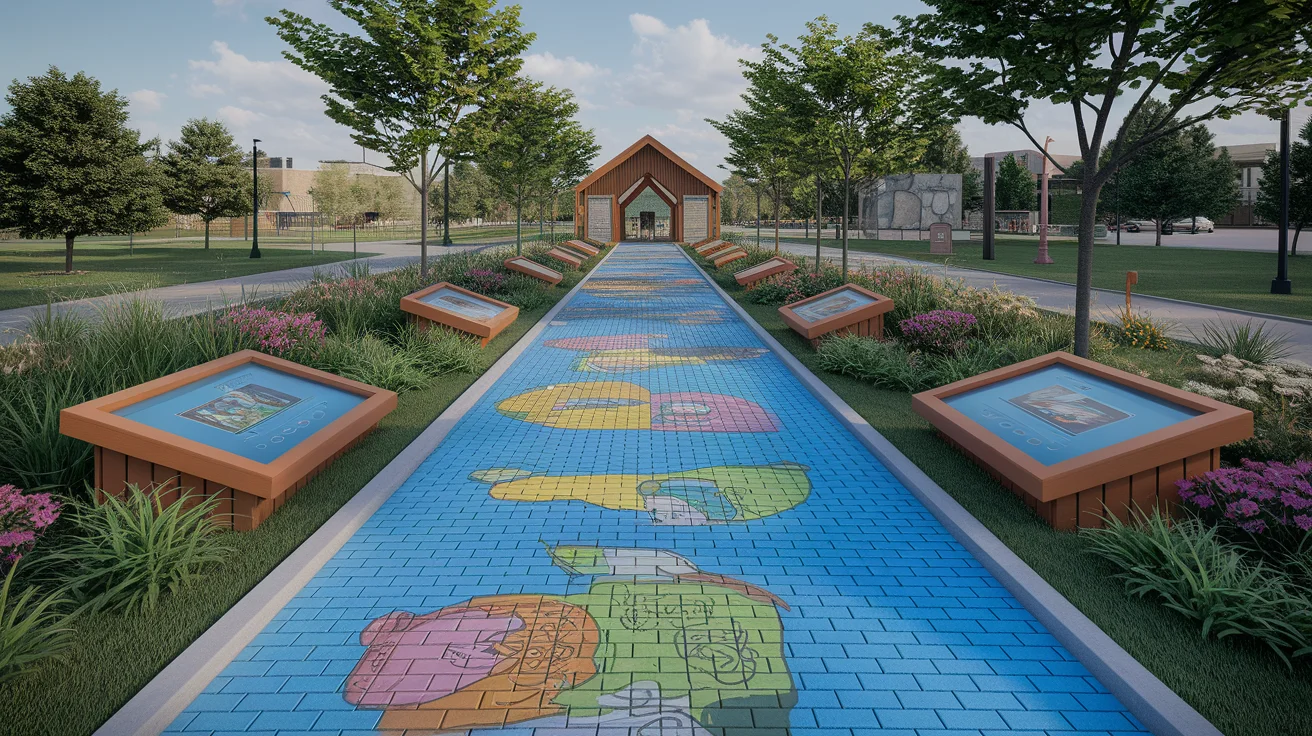
Enchanted Nightwalk Pathway
Create an Enchanted Nightwalk Pathway that transforms an evening stroll into a magical experience. Construct the path using glow-in-the-dark pebbles or concrete, absorbing sunlight during the day to illuminate the trail at night. Alongside the path, install softly glowing lanterns or fairy lights within glass sculptures, casting whimsical shadows onto the surroundings. Incorporate sensor-activated sound features that play gentle, mystical melodies or soft nature sounds as visitors pass by. Enchanting elements, such as bioluminescent plant displays or moonlit water features, can add to the ethereal atmosphere. Consider integrating artistic, interactive installations like shadow puppetry walls or silhouette gardens to captivate imagination. Choose a dreamy color palette with hues like midnight blue, silvery white, and shimmering gold to enhance the otherworldly ambiance, offering a serene yet magical escape for people of all ages.
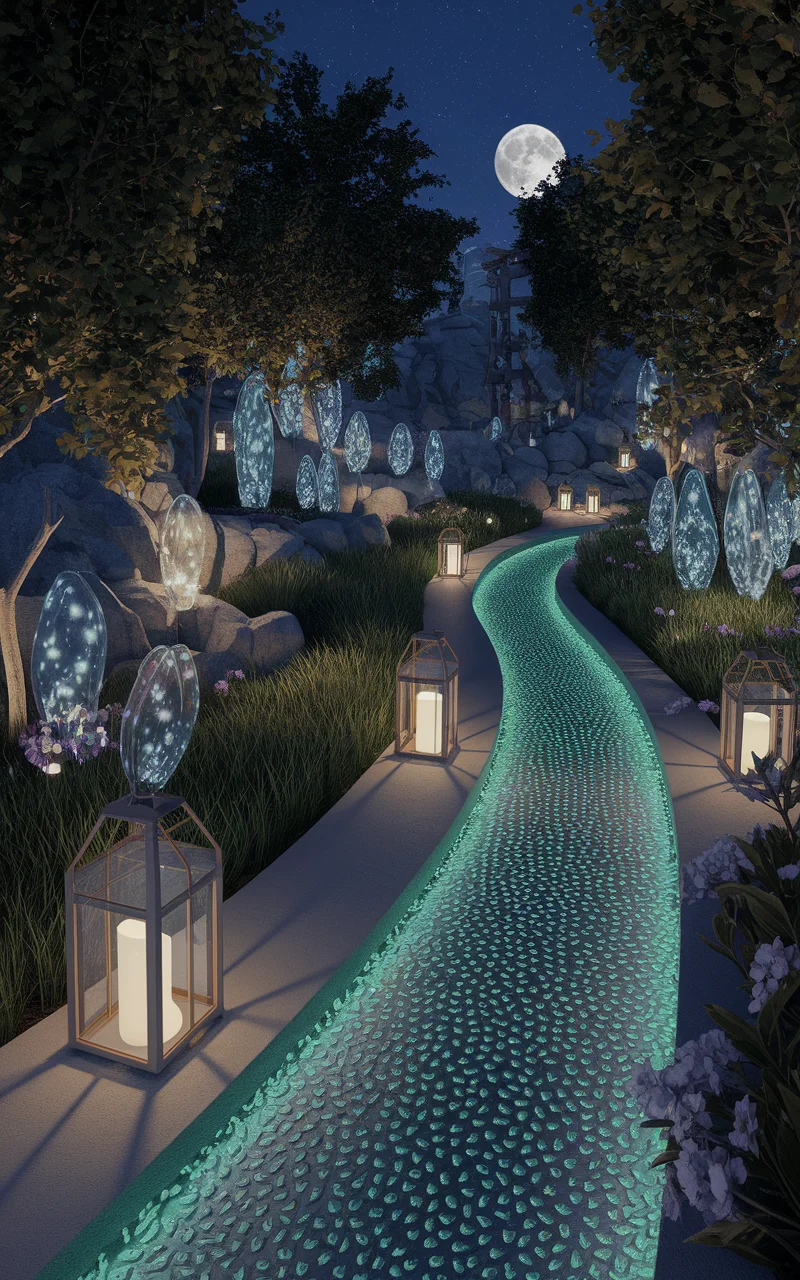
Historical Time-Travel Pathway
Craft a Historical Time-Travel Pathway that takes visitors on a chronological journey through the past. This imaginative trail can be segmented into different eras, each section featuring distinctive ground textures and materials like cobblestones for medieval times or polished stone slabs for modern history. Install informative panels and interactive AR (Augmented Reality) stations, where guests can point their devices to see animated historical figures or events come to life. Include benches styled after different time periods, offering both rest and a historical narrative. Small audio stations can play era-specific music or narrations, enhancing immersion. A color scheme of sepia tones, vintage amber, and muted silver can evoke a sense of antiquity and nostalgia. This pathway provides an engaging blend of education and exploration, allowing visitors to stroll through history in an innovative and captivating manner.
